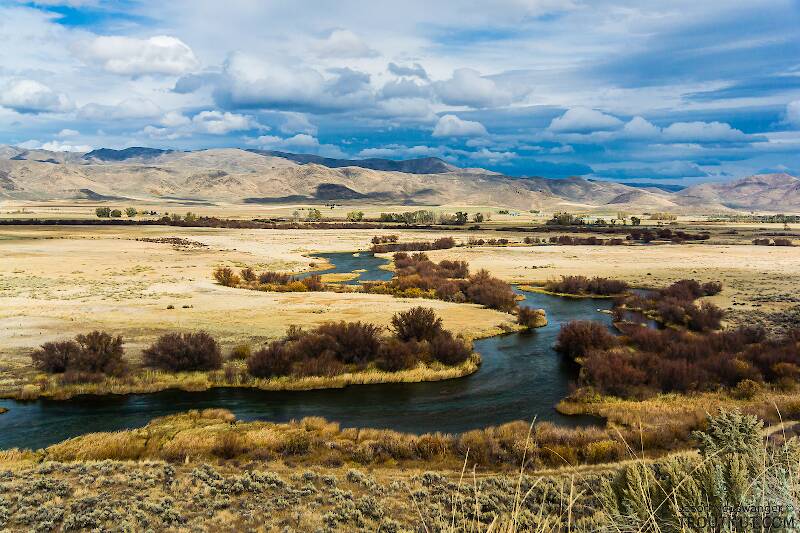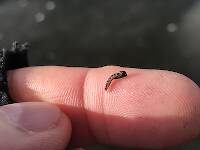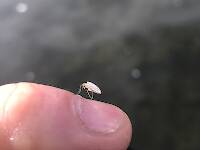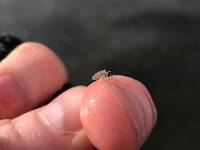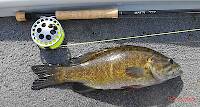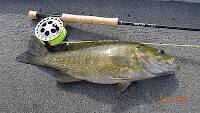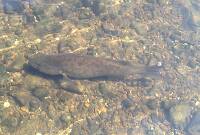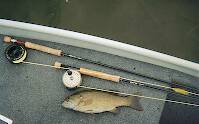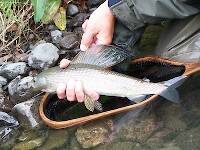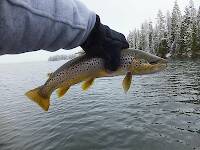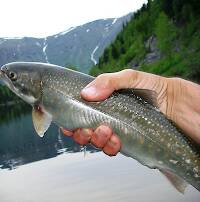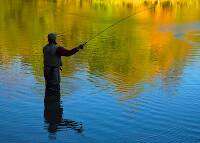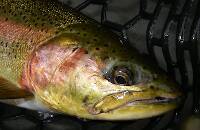
Salmonflies
Pteronarcys californica
The giant Salmonflies of the Western mountains are legendary for their proclivity to elicit consistent dry-fly action and ferocious strikes.
Featured on the forum

This one was surprisingly straightforward to identify. The lack of a sclerite at the base of the lateral hump narrows the field quite a bit, and the other options followed fairly obvious characteristics to Clostoeca, which only has one species, Clostoeca disjuncta.

Troutnut is a project started in 2003 by salmonid ecologist Jason "Troutnut" Neuswanger to help anglers and
fly tyers unabashedly embrace the entomological side of the sport. Learn more about Troutnut or
support the project for an enhanced experience here.
Jlw_5178 on Nov 1, 2009November 1st, 2009, 12:15 pm EST
I live in washington county maryland and would like to know what type of caddis flys I have been seeing hatch lately. I usually fish beaver creek and antietam creek. If anyone is familiar with these areas this time of year I would love to hear your take
Oldredbarn on Nov 4, 2009November 4th, 2009, 4:36 am EST
Jody,
How's about some more details? Size? Color? Etc. I suspect that your part of the country is a bit different than here in Michigan. It was actually spitting snow this morning and was 35 out on my way home from the Wings game last night.
Are these caddis you are seeing about a size 18/20, with a black wing, and funny looking protrusions coming from the side of its head(like little horns or handlebars)? I'm guessing here but we get a late season "Black Dancer" up here (Mystacides sepulchralis), but I'm pretty sure the hatch is over. Maybe where you are it stays warmer a bit longer and the hatch straggles on a bit longer...Again I'm guessing here.
Hagerstown? My mother is originally from Maryland, but west of you over near Oakland...A little town called Hutton. She grew up on a farm way back in the middle of nowhere! Have you ever fished over that way? I once caught the largest blue-gill I've ever seen out of Deep Creek Lake. He almost filled up a paper plate!
Back in the mid-90's my grandmother passed away and my mother and I took her back and had a small ceremony in Oakland for family there and then drove her to a small graveyard, on top of a hill, in the middle of a farmers field...It was near Red House. I couldn't believe it when the hearse pulled off on to a two-track and fish-tailed a bit as it headed up the trail. What a view!
Spence
How's about some more details? Size? Color? Etc. I suspect that your part of the country is a bit different than here in Michigan. It was actually spitting snow this morning and was 35 out on my way home from the Wings game last night.
Are these caddis you are seeing about a size 18/20, with a black wing, and funny looking protrusions coming from the side of its head(like little horns or handlebars)? I'm guessing here but we get a late season "Black Dancer" up here (Mystacides sepulchralis), but I'm pretty sure the hatch is over. Maybe where you are it stays warmer a bit longer and the hatch straggles on a bit longer...Again I'm guessing here.
Hagerstown? My mother is originally from Maryland, but west of you over near Oakland...A little town called Hutton. She grew up on a farm way back in the middle of nowhere! Have you ever fished over that way? I once caught the largest blue-gill I've ever seen out of Deep Creek Lake. He almost filled up a paper plate!
Back in the mid-90's my grandmother passed away and my mother and I took her back and had a small ceremony in Oakland for family there and then drove her to a small graveyard, on top of a hill, in the middle of a farmers field...It was near Red House. I couldn't believe it when the hearse pulled off on to a two-track and fish-tailed a bit as it headed up the trail. What a view!
Spence
"Even when my best efforts fail it's a satisfying challenge, and that, after all, is the essence of fly fishing." -Chauncy Lively
"Envy not the man who lives beside the river, but the man the river flows through." Joseph T Heywood
"Envy not the man who lives beside the river, but the man the river flows through." Joseph T Heywood
JOHNW on Nov 4, 2009November 4th, 2009, 8:10 am EST
Jody,
I will second the request for more info.
If it was a much larger caddis it could also possibly have been an "October Caddis" or "Great Orange Sedge" (sorry I'm not real good with the Latin for Caddis).
On the CV streams a little more northeast of you we have still been seeing some tan caddis that are about a #16-18 coming off sporadically but then again those streams have been known to have sporadic sulphurs in February.
JW
I will second the request for more info.
If it was a much larger caddis it could also possibly have been an "October Caddis" or "Great Orange Sedge" (sorry I'm not real good with the Latin for Caddis).
On the CV streams a little more northeast of you we have still been seeing some tan caddis that are about a #16-18 coming off sporadically but then again those streams have been known to have sporadic sulphurs in February.
JW
"old habits are hard to kill once you have gray in your beard" -Old Red Barn
Jlw_5178 on Nov 6, 2009November 6th, 2009, 11:50 am EST
in flight they look to be a light tannish color, when held in your hand with the wings closed they are a darker brown color(top side of wings). They are about a size 16. the elk hair caddis flys I have seem to match them perfectly when drifting in the water but I would like to find out what they actually are and also what they look like as emergers and nymphs. I hope this is enough info as I look forward hearing some suggestions. thank you for your help
Quick Reply
Related Discussions
Topic
Replies
Last Reply
9
Apr 30, 2013
by Oldredbarn
by Oldredbarn

